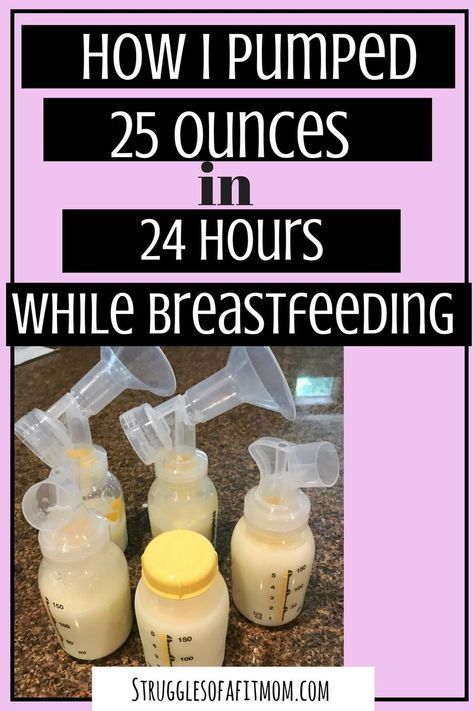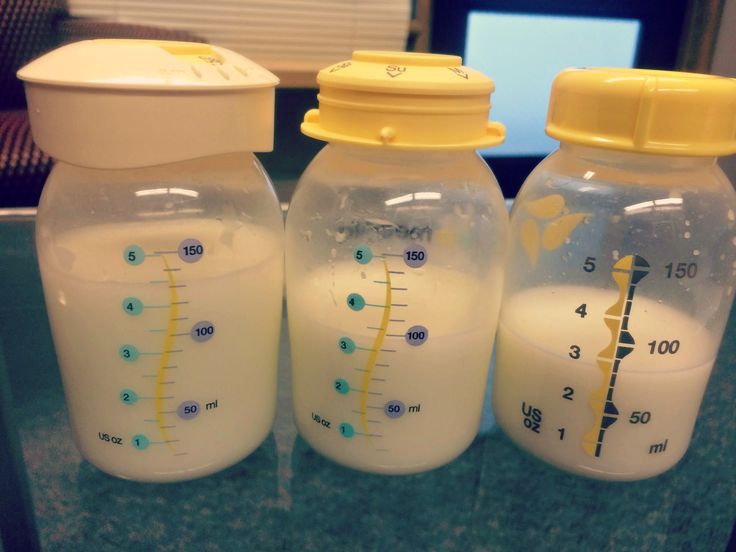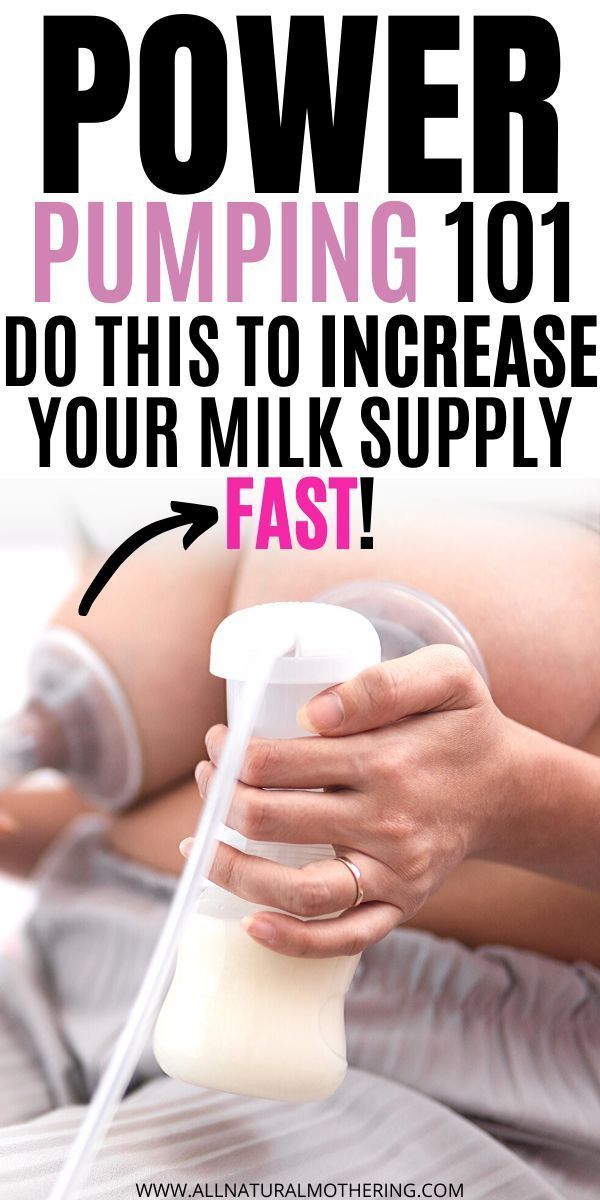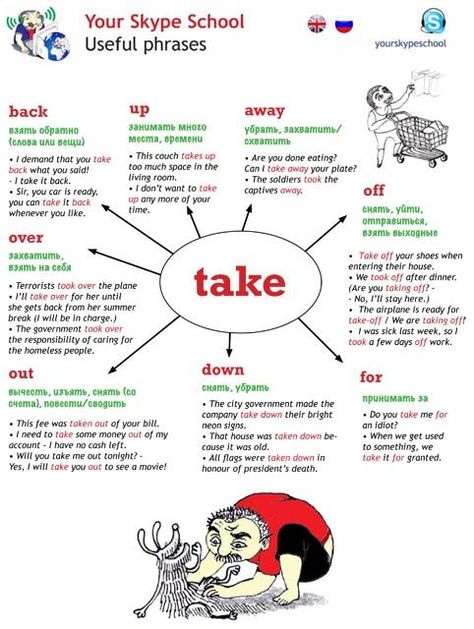Boosting breast milk production
Low Milk Supply | WIC Breastfeeding Support
Many moms worry about low milk supply, but most of the time your body makes exactly what your baby needs, even if you don't realize it. There are also ways to tell if your baby is getting enough milk. If you aren't making enough, there are ways you can build your supply. And your WIC breastfeeding staff is always there to help!
Am I Making Enough Milk?
First, look for these signs that your baby is getting enough milk. For example, pay attention to the number of wet and dirty diapers and your baby's weight gain.
Things you should NOT worry about:
- How your breasts feel. Your breasts will feel softer and less full as your milk supply adjusts to your baby's needs. This does not mean you have low supply.
- If your baby nurses for shorter periods of time, such as only 5 minutes on each breast.
- If your baby's feeds are bunched together. This is called cluster feeding and happens when your baby starts nursing more often and for longer.
This can happen in the evenings or because of growth spurts.
- Not getting much milk when you express. Your baby is much more effective than a pump or hand expression at getting out milk. Find tips to help you pump.
If you are still concerned, talk to your baby's doctor about their growth.
Causes of Low Milk Supply
While most moms make plenty of milk, some do have low milk supply. This might happen if you:
- Limit your baby's breastfeeding sessions. Remember, the more you feed on demand, the more milk you make.
- Give your baby infant formula instead of breastfeeding.
- Introduce solid foods before baby is 4-6 months old.
- Take certain birth control pills or other medicine.
- Don't get enough sleep.
- Drink alcohol or smoke.
- Have had breast surgery.
Talk to your doctor if you have hepatitis B or C, herpes, or diabetes. These conditions may also affect milk supply.
Increasing Your Milk Supply
Breastfeeding frequently—especially in the first hours, days, and weeks—is the main way to increase your milk supply. Your body will make milk to meet your baby's demand.
Try these tips to help you make more milk:
- Breastfeed every time your baby is hungry. In the early weeks, your baby will eat 8-12 times every 24 hours. It's best not to put your baby on a strict feeding schedule. Follow your baby's cues, and let your baby tell you when it's time to eat.
- Make sure your baby is latching well.
- Offer both breasts at each feeding. Let your baby finish the first side, then offer the other side.
- Empty your breasts at each feeding.
 Hand express or pump after a feeding to draw out all the milk and signal your body to make more.
Hand express or pump after a feeding to draw out all the milk and signal your body to make more. - Avoid bottles and pacifiers in the early weeks. Feed your baby from your breast whenever you can.
- Get plenty of sleep, and eat a healthy diet.
- Pump or express your milk. Pumping or expressing milk frequently between nursing sessions, and consistently when you're away from your baby, can help build your milk supply.
- Relax and massage. Relax, hold your baby skin-to-skin, and massage your breasts before feeding to encourage your milk to let down.
- Take care of yourself. Get plenty of rest, eat well, drink enough fluids, and let others help you.
Consider Charting Your Progress
Record how often your baby is breastfeeding, for how long, and on which sides. If you are supplementing with infant formula, record how much your baby is getting and decrease the infant formula as your milk supply increases. WIC breastfeeding staff can help you determine how much infant formula your baby needs.
WIC breastfeeding staff can help you determine how much infant formula your baby needs.
Still Have Questions?
Contact your WIC breastfeeding expert. They can talk to you about supply concerns and give you tips to increase your supply to meet your baby's needs.
Breastfeeding: Tips to Increase Your Milk Supply l University Hospitals l Northeast Ohio
Signs That a Breastfed Baby Is Being Well Nourished
- Your baby nurses at least 8 to 16 times in 24 hours, or every 2 to 3 hours. Your baby may be fussy once or twice a day. At these times, he or she wants to nurse often for several hours before seeming full. This is called cluster feeding.
- Your baby wets at least 6 cloth or 5 disposable diapers and has at least 1 bowel movement in 24 hours. This occurs by 1 week of age.
- You can hear your baby swallow milk while nursing or you can feel your baby swallow when lightly touching his or her throat.
- Your breasts seem softer after nursing.

- Your baby gains 4 to 8 ounces a week after the first week. There is no need to weigh your baby at home. Your baby’s doctor will do this for you. You may notice that your baby has outgrown his or her clothing.
- Your baby has regained his/her birthweight by 10 to 14 days after birth.
Factors Which Can Cause Your Milk Supply to Decrease
- Your baby feeds fewer than 8 to 16 times in 24 hours. Milk production is affected by how well the breast is drained.
- Your baby has a very weak suck, or has an improper latch.
- Giving bottles of formula or water after nursing. Most babies will suck on a bottle after nursing. This just means they need to suck. It does not mean they are still hungry. Babies cry or fuss for many reasons, such as being tired, bored, wet, hot or cold.
- Giving solid foods too early and/or before you breastfeed. Most babies do not need solid foods for the first 6 months if they are breastfeeding 8 to 16 times a day.

- Smoking can cause a decreased milk supply and interfere with the letdown reflex. Here are some things you should do:
- Try to quit or cut down.
- Smoke after nursing, not before.
- Don’t smoke in the same room with your baby.
- Beginning birth control pills too soon can decrease your milk supply. Wait at least 6 weeks before taking birth control pills and then use only the mini-pill (Progestin). If you still notice a decrease in your milk supply, talk to your doctor about other birth control options. Other medications may also affect milk supply. Check with your doctor. (Refer to PI-682, Breastfeeding and Birth Control: You Have Options.)
- Mothers who are exhausted may notice a decrease in milk supply. To keep yourself from getting too tired:
- Sleep or relax when your baby sleeps.
- Eat balanced diet that includes high-protein food.
- Drink when you are thirsty so that your urine is pale yellow in color.
 Both under and excessive over hydration can decrease milk supply.
Both under and excessive over hydration can decrease milk supply. - Take an iron supplement if your healthcare provider says you are anemic.
- Talk with your doctor or nurse midwife about the need for vitamin supplement.
- Accept help when it is offered.
- Use nipple shields and pacifiers with caution.
- A breast flange that is too small or too large in size can hurt your milk supply.
- Pregnancy
- Breast reduction surgery may reduce milk supply.
If You Notice Your Milk Supply Is Low
You can increase your milk supply by:
- Nursing your baby often. Nurse every 2 hours during the day and every 3 to 4 hours at night (at least 8 to 16 times in 24 hours). If your baby will not nurse, use a good quality double electric breast pump to increase milk production. Pumping after breastfeeding signals your body to produce more milk.
- Nurse your baby at least 15 minutes at each breast.
 Do not limit nursing time. If your baby falls asleep after one breast, wake him or her and offer the second breast. A few babies may benefit from nursing at one breast per feeding to increase the fat content of the feeding. Switch nursing- switching breasts several times during a feeding has been shown to increase milk supply.
Do not limit nursing time. If your baby falls asleep after one breast, wake him or her and offer the second breast. A few babies may benefit from nursing at one breast per feeding to increase the fat content of the feeding. Switch nursing- switching breasts several times during a feeding has been shown to increase milk supply. - Gently massage breast before and during feedings.
- Use relaxation techniques to reduce stress and promote the flow of breast milk.
- Provide skin to skin time with your baby for about 20 minutes after feeds. This “kangaroo care” has been shown to increase milk supply.
- Be sure baby is positioned and latched correctly.
- Offer both breasts at each feeding.
- Try breast compression during the feeding to help drain the breast.
- Pump immediately after breastfeeding during the day. Rest at night. Some mothers find that they get more milk if they pump for 5 minutes, rest for 5 minutes, and pump for another 10 minutes.

Talk to your doctor about using medication or the herb fenugreek.
Works Cited
Wambach, Karen and Riordan, Jan “Breastfeeding and Human Lactation”, Fifth edition, Jones & Bartlett, 2016.
Breast milk production | Baby's needs
Did you know that the amount of breast milk adapts to your baby's needs? In this article, you will learn amazing facts about breast milk production in the first days, weeks and months.
Share this information
Your body is capable of producing breast milk for your baby at every stage of development. Understanding how milk production “turns on”, what happens to milk when you feed your baby, and why production adjusts to his needs as he grows, will help you start this amazing process in the right way.
Day one: milk production at birth
The baby is usually ready to breastfeed from birth. When he grabs the breast and begins to suck rhythmically, the milk-producing cells “turn on” and the formation of the first breast milk, colostrum, starts.![]() 1 Try to feed your baby as much as possible in the first hour of his life, and then as soon as he shows interest in feeding. This will help lay the foundation for good milk production later on. 2
1 Try to feed your baby as much as possible in the first hour of his life, and then as soon as he shows interest in feeding. This will help lay the foundation for good milk production later on. 2
The first days: the arrival of milk
At this stage, your body's level of progesterone, the
pregnancy hormone, which begins to fall after the placenta comes out, is reduced, and the hormones responsible for milk production - prolactin, insulin and hydrocortisone - are included in the work. These hormones will help start milk production. 3 Around the third day of your baby's life, milk will begin to come in and you will feel that your breasts have filled up and become noticeably firmer. 1
First month: shaping milk production
During the first weeks, your body will be especially sensitive to the amount of milk produced as it learns to produce the right amount. Prolactin levels increase dramatically each time you empty your breasts, thereby helping shape the lactation process. It also contributes to the maturation of your milk in terms of composition. At this stage, transitional milk is produced and the amount continues to grow. 3.4
It also contributes to the maturation of your milk in terms of composition. At this stage, transitional milk is produced and the amount continues to grow. 3.4
For good long-term milk production, it is very important that you are close to your baby during the first few weeks. The more often you breastfeed, the more milk will be produced. This process resembles the law of supply and demand. Each time after emptying the breast, whether it is feeding the baby or pumping, even more milk will be produced.
Remember that it is normal for newborns to eat frequently, perhaps even every 45 minutes, and this does not mean that they are not getting enough milk. Frequent feedings help shape milk production, so feed your baby on demand, not on a schedule.
“In the first few weeks you may feel like you don’t have enough milk because your baby will be feeding all the time, but that’s okay,” says UK mom-of-two Jo, “We tend to think that the baby wants to eat every few hours, but that is not necessarily the case. "
"
Don't forget that babies also breastfeed for comfort. Breastfeeding helps them calm down and adjust to their new life outside the womb. In addition, feeding helps to establish a connection between you.
Stable milk production in the first month
If you follow your baby's needs and feed him as often and for as long as he wants, milk production should adjust. 5
Some mothers try to increase the period between feedings so that the breasts can produce more milk during this time, but this should not be done, as this may have the opposite effect. 2
If you are unable to breastfeed directly for the first two weeks, express your milk to build and maintain your milk supply during this critical period and beyond.
Did you know that feeding your baby extra formula unnecessarily can reduce your milk production? The chest will not receive a signal to increase production, because it will not be emptied. In addition, if the baby sleeps longer after formula, he may miss his usual next feeding time.![]()
This is a kind of “supplementing trap”. After three to four days of formula supplementation, during which the breasts have emptied less, the body will receive a signal that breastfeeding has stopped, and the amount of milk produced will begin to decrease. As a result, the baby will remain hungry and will need additional formula supplementation. And so on in a circle ... As a result, this will lead to really low milk production, and the baby will eat mainly the mixture.
Breast milk production after six weeks
After a month of breastfeeding, post-feeding bursts of prolactin secretion begin to decrease, milk matures, and the body gets used to producing as much milk as your baby needs. In fact, the chest begins to work "on autopilot." 4 You may also notice at this time that your breasts are softer and your milk flow has stopped.
At this stage, women often have fears of "losing milk".
However, this only means that milk production has been established and now fully meets the needs of the child. It is noteworthy that although the baby continues to grow, he will consume approximately the same amount of milk both at six weeks and at six months. You may notice that the baby began to suckle the breast longer, but less often. On some days he may eat a little less than usual - his appetite changes in the same way as an adult.
It is noteworthy that although the baby continues to grow, he will consume approximately the same amount of milk both at six weeks and at six months. You may notice that the baby began to suckle the breast longer, but less often. On some days he may eat a little less than usual - his appetite changes in the same way as an adult.
Now your body will produce exactly the amount of milk,
as much as your baby needs. Therefore, the more milk the baby
drinks (or you express), the more it will produce.
How does this happen? The reason for this is thought to be the so-called "feedback lactation inhibitor" that controls milk production. The more milk in the breast, 2 the higher the inhibitor level, so a full breast produces less milk than one that has been emptied.
What is the rate of milk production?
Mothers often worry about their milk supply and think about how to increase it. However, if the baby is healthy and growing well, problems usually do not arise.
“I was worried that my newborn daughter was not getting enough milk as she was feeding very quickly and always from one breast even though I offered both,” says Marjorie, mother of two in the UK, “But when I pumped from using a breast pump, I was surprised at how much milk I produced, and calmed down. I just had to keep feeding her little and often.”
Keep in mind, however, that not all mothers are able to express a lot of milk right away. You can also try hand expressing milk and see if there is a change in breast fullness.
If you're worried about your milk supply, read our tips for symptoms of too little or too much milk.
Literature
1 Pang WW, Hartmann PE. Initiation of human lactation: secretory differentiation and secretory activation. J Mammary Gland Biol Neoplasia 2007;12(4):211-221. - Pang, W.W., Hartmann, P.I., "Lactation initiation in the lactating mother: secretory differentiation and secretory activation. " G Mammary Gland Biol Neoplasia. 2007;12(4):211-221.
" G Mammary Gland Biol Neoplasia. 2007;12(4):211-221.
2 Kent JC et al. Principles for maintaining or increasing breast milk production. J Obstet Gynecol Neonatal Nurs . 2012;41(1):114-121. - Kent J.S. et al., "Principles for Maintaining and Increasing Milk Production". F Obstet Ginecol Neoneutal Nurs. 2012;41(1):114-121.
3 Ostrom KM. A review of the hormone prolactin during lactation. Prog Food Nutr Sci . 1990;14(1):1-43. - Ostrom KM, "Review of the role of the hormone prolactin during lactation." Prog Food Nutr Sai. 1990;14(1):1-43.
4 Cox DB et al. Blood and milk prolactin and the rate of milk synthesis in women. Exp Physiol. 1996;81(6):1007-1020. - Cox D.B. et al., Effects of blood and milk prolactin on milk production in women. Exp Physiol. 1996;81(6):1007-1020.
Exp Physiol. 1996;81(6):1007-1020.
5 Kent JC et al. Volume and frequency of breastfeedings and fat content of breast milk throughout the day. Pediatrics. 2006;117(3): e 387-95. - Kent J.S. et al., "Amount and frequency of breastfeeding and fat content of breast milk during the day." Pediatrix (Pediatrics). 2006;117(3): e 387-95.
obstetrician-gynecologist Starostina Antonina Viktorovna.
For the normal development of lactation, first of all, it is necessary to organize the feeding of the child (feeding on demand, without a night break, the absence of nipples and pacifiers that suppress the suckling reflex of the baby), properly care for the breast, use a breast pump to stimulate and increase lactation, use according to indications other accessories for breastfeeding.
Sleep should be at least 10 hours a day - night and day. Outdoor walks for at least 2 hours. Frequent breastfeeding from birth (at least 10 times a day) with obligatory night feedings. Good nutrition and an increase in the amount of fluid consumed up to 1.5 - 2 liters per day (this is tea, soups, decoctions, milk, dairy products). Shower-massage: after feeding the baby and expressing milk, pour hot water (45 degrees) from the shower over the mammary gland that was fed, while massaging in circular motions from the nipple to the periphery and from top to bottom, while expressing milk. Duration 5-10 minutes.
Frequent breastfeeding from birth (at least 10 times a day) with obligatory night feedings. Good nutrition and an increase in the amount of fluid consumed up to 1.5 - 2 liters per day (this is tea, soups, decoctions, milk, dairy products). Shower-massage: after feeding the baby and expressing milk, pour hot water (45 degrees) from the shower over the mammary gland that was fed, while massaging in circular motions from the nipple to the periphery and from top to bottom, while expressing milk. Duration 5-10 minutes.
Perform the procedure 2 times for the left and 2 times for the right breast during the day. Drink hot tea with milk 30 minutes before feeding.
Drink in small sips throughout the day.
- Steep 3 teaspoons of dried nettle with 2 cups of boiling water and infuse for 10-15 minutes (we only infuse fresh herb for 2 minutes). The resulting drink should be used during the day.
- A very effective remedy that stimulates the flow of milk and helps increase lactation is an infusion of walnuts, which is prepared as follows: brew 0.
 5 cups of peeled walnuts with 0.5 liters of boiling milk in a thermos and infuse for 3-4 hours. Infusion take 1/3 cup 20 minutes before each feeding, but not daily, but every other day.
5 cups of peeled walnuts with 0.5 liters of boiling milk in a thermos and infuse for 3-4 hours. Infusion take 1/3 cup 20 minutes before each feeding, but not daily, but every other day. - A mixture that promotes lactation is very good: 100 g dried apricots, 100 g raisins, 100 g figs, 1 cup walnuts. Grind everything and mix with 100 g of honey and 100 g of butter. Use 1 tbsp. spoon 15-20 minutes before feeding. Watch your child's reaction! Allergy is possible.
- Useful green tea with dill seeds, raspberry leaf, linden, oregano, lemon balm.
Be sure to use special multivitamin complexes for pregnant and lactating women, which also help improve lactation. They will improve the quality of milk and increase its quantity:
- Hipp tea for breastfeeding mothers.
- Apilac 0.01 under the tongue and dissolve. Take 2-3 times a day. Pay attention to the child's reaction! Allergy is possible.
- Vitamin E capsules 0.1-0.2 - 2 times a day.
- Ascorbic acid (vitamin C) up to 1 g per day.













